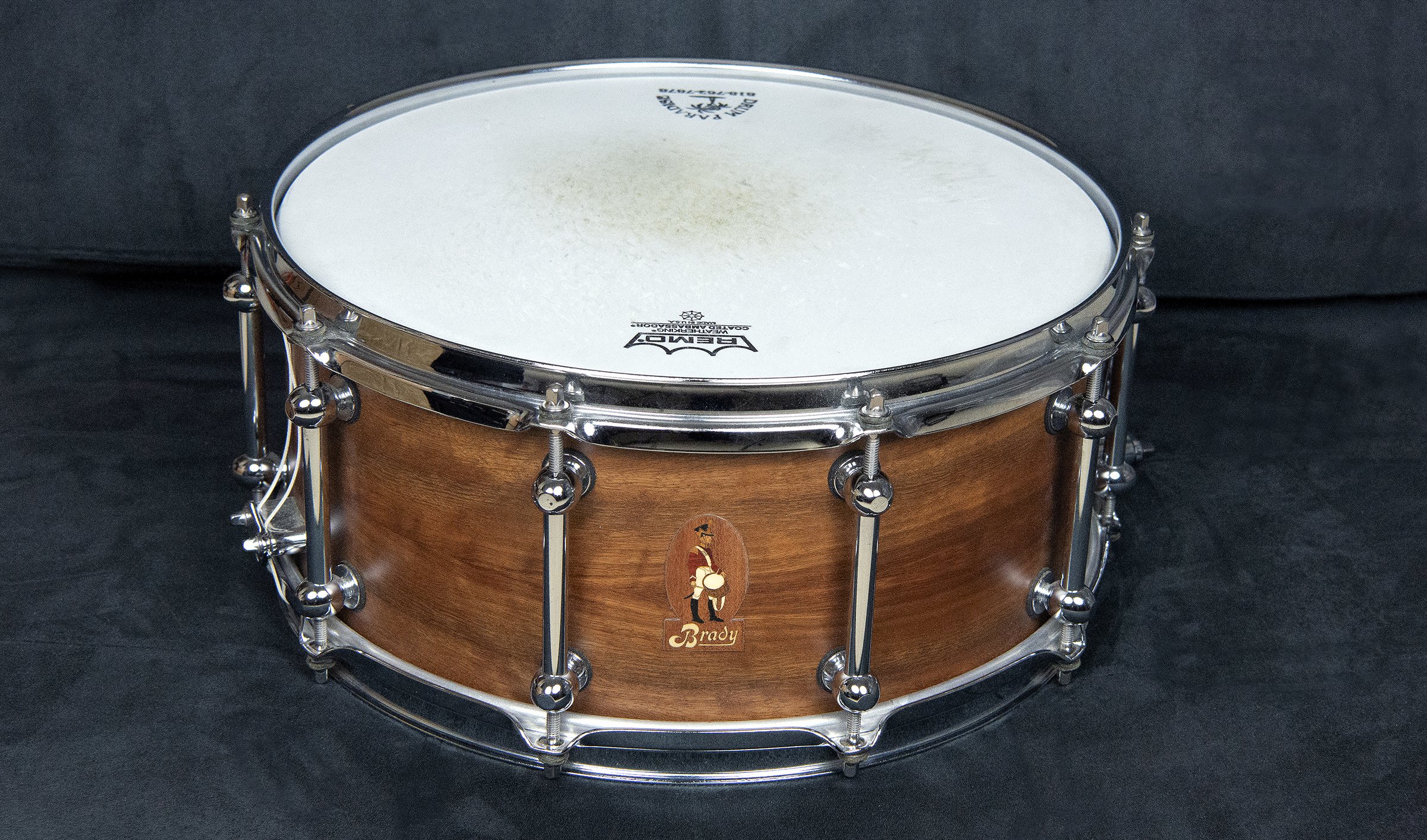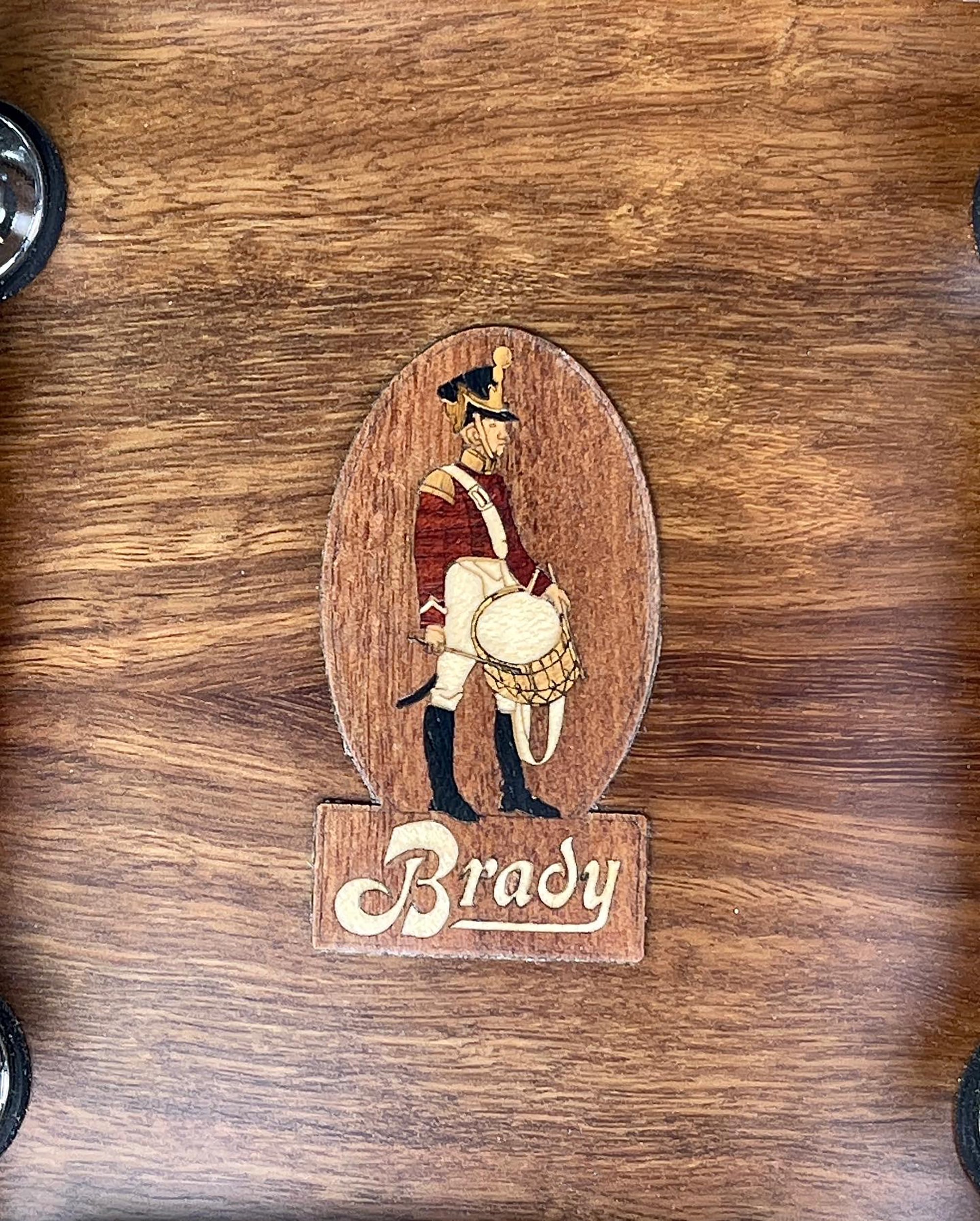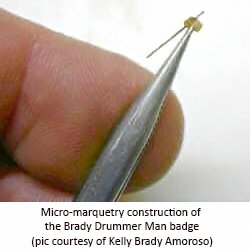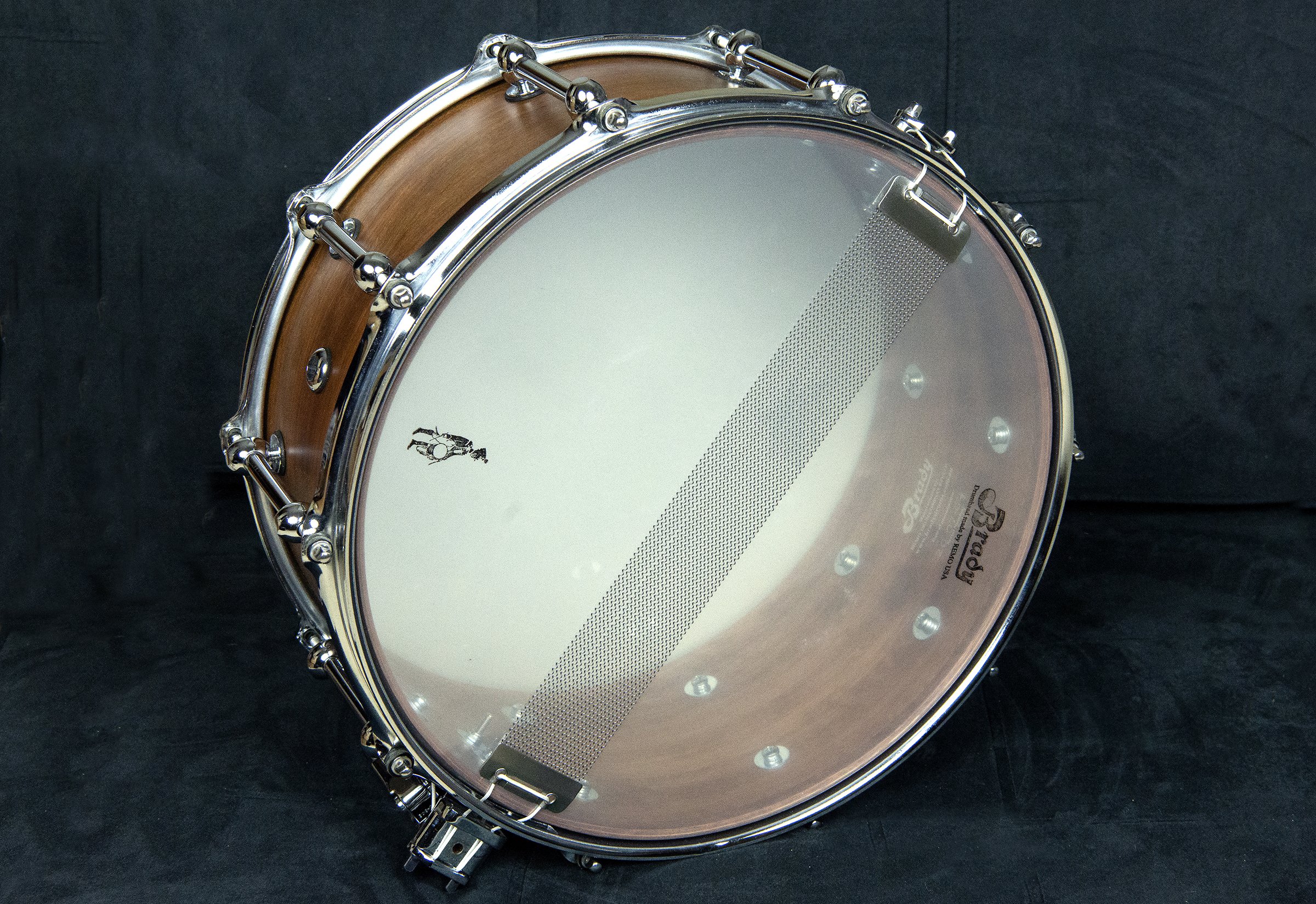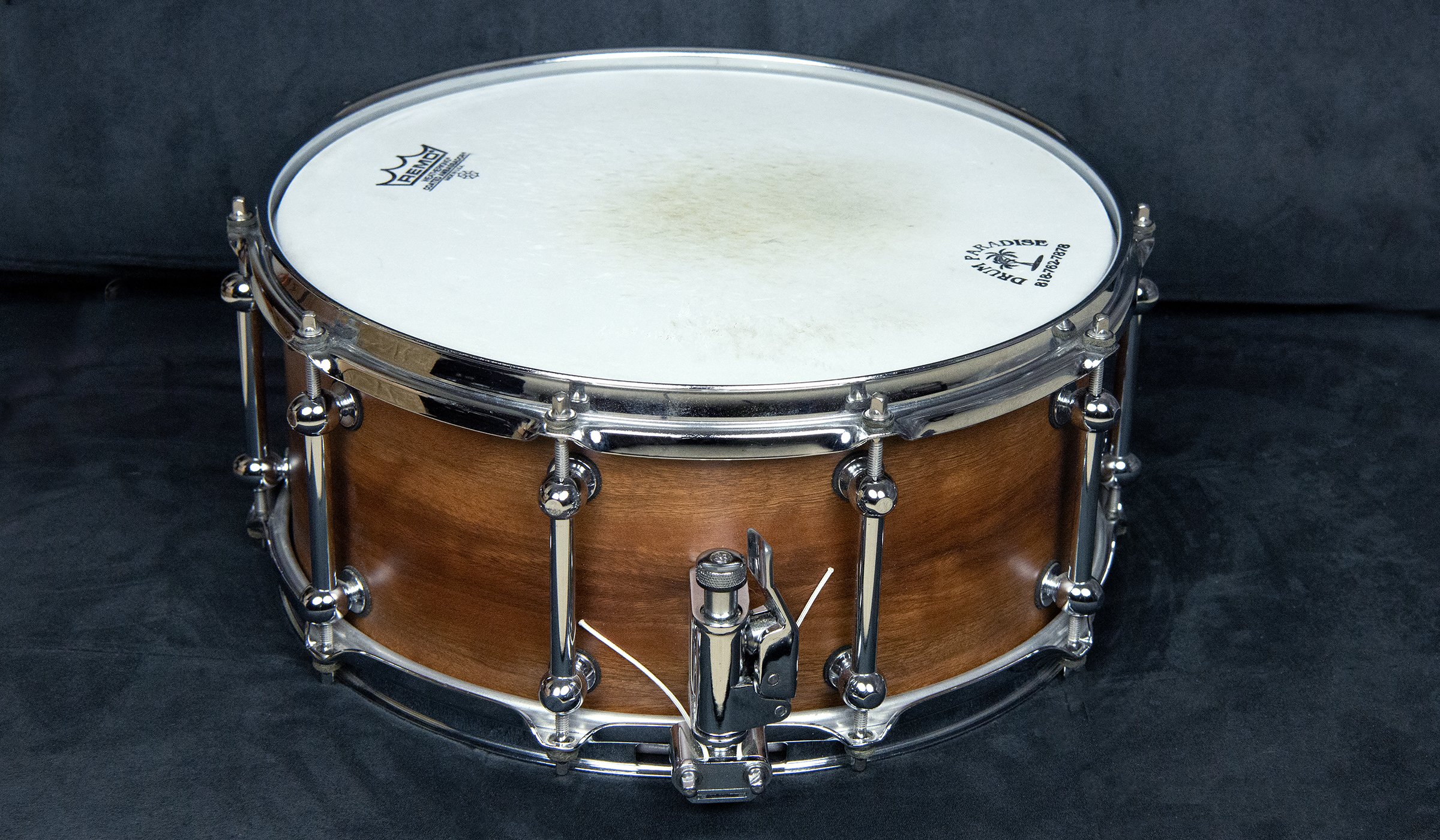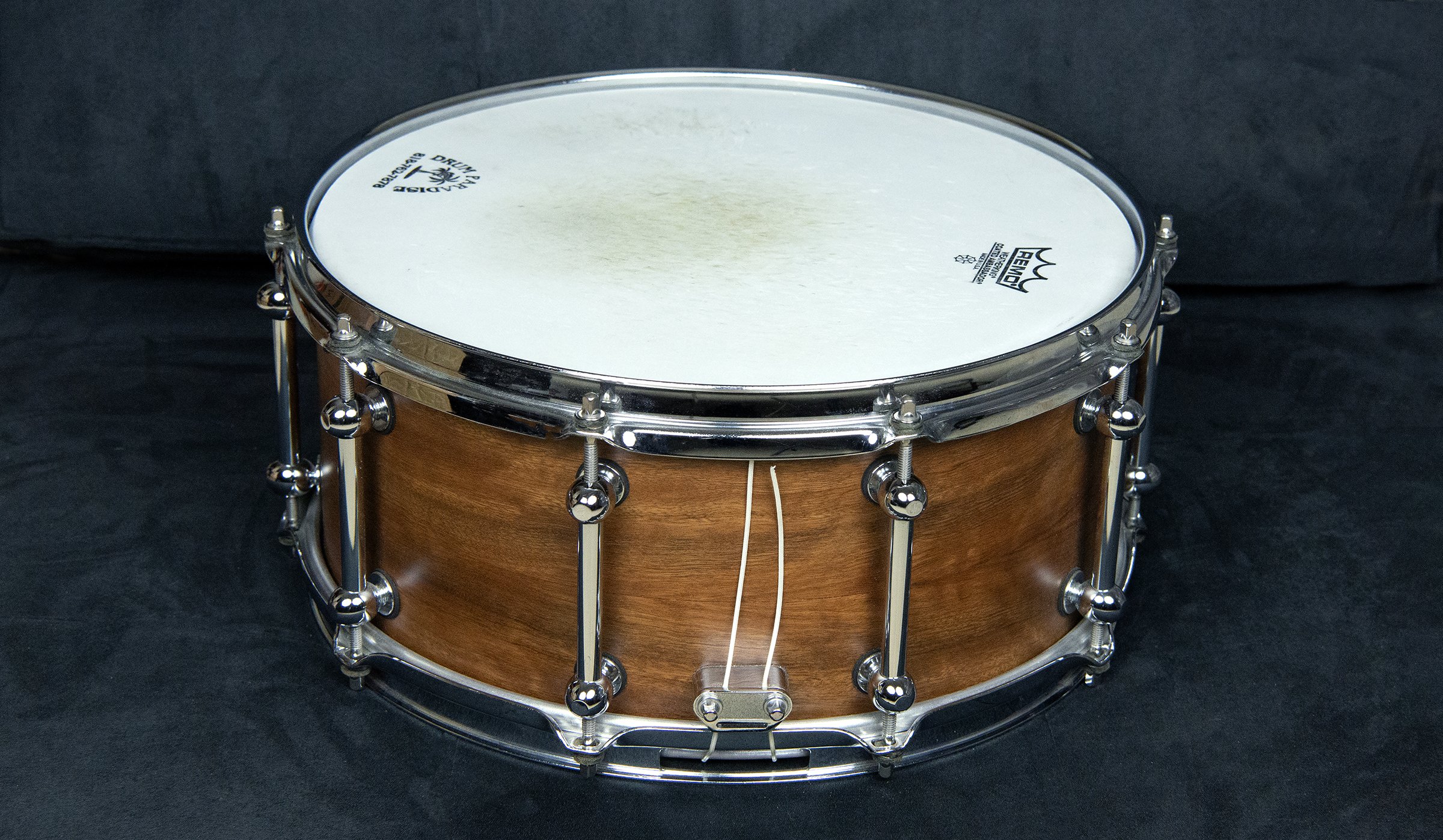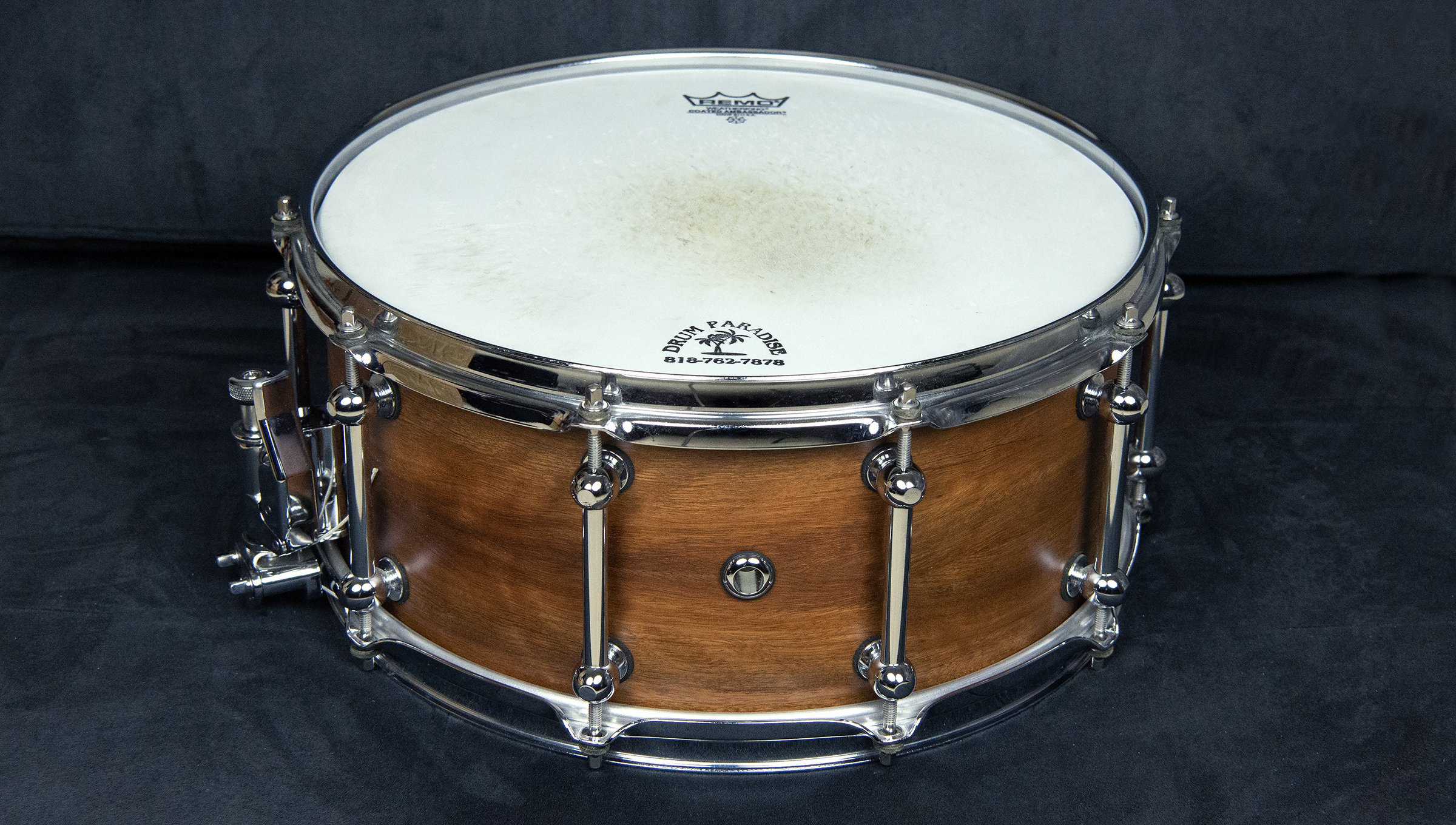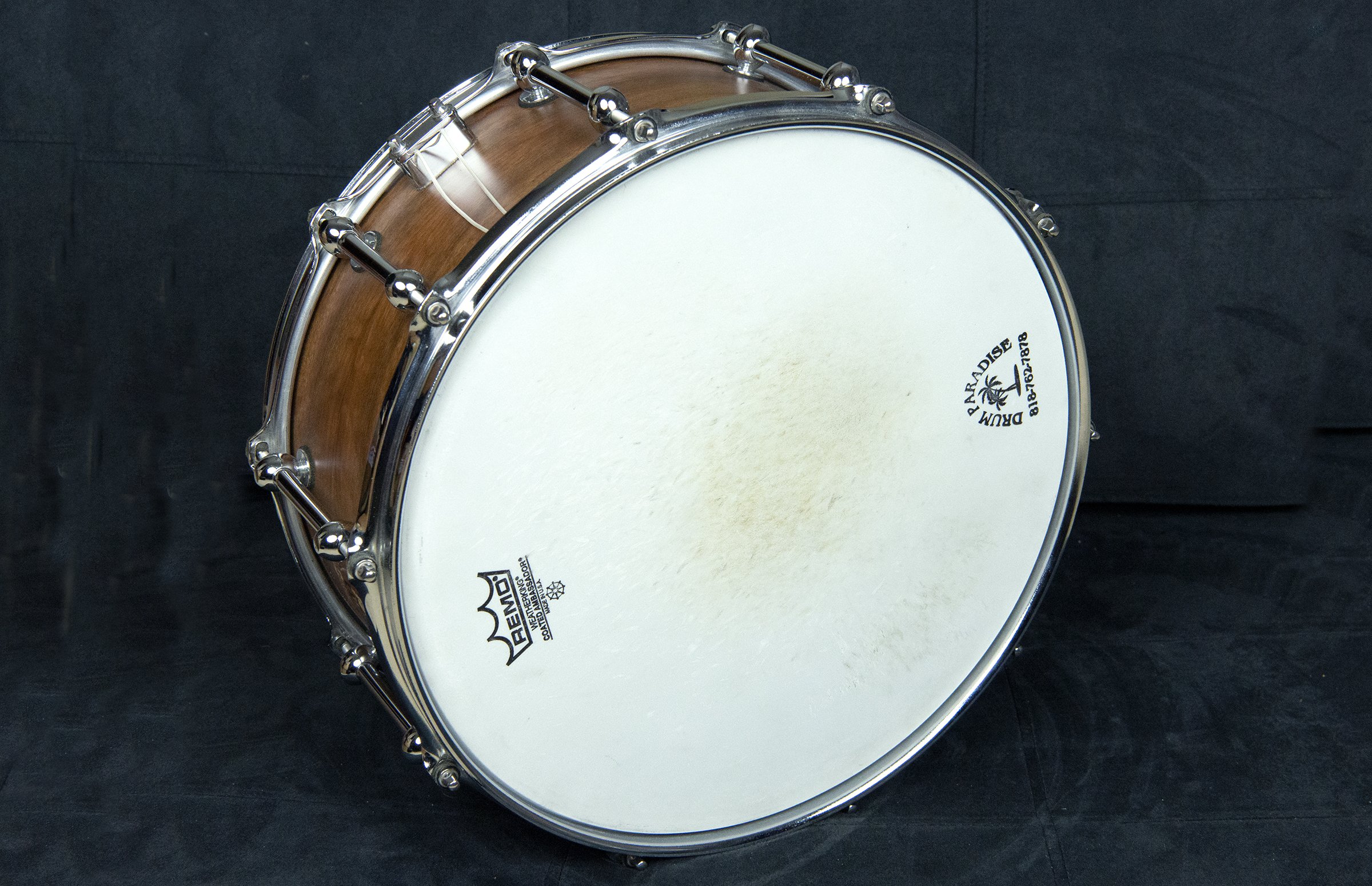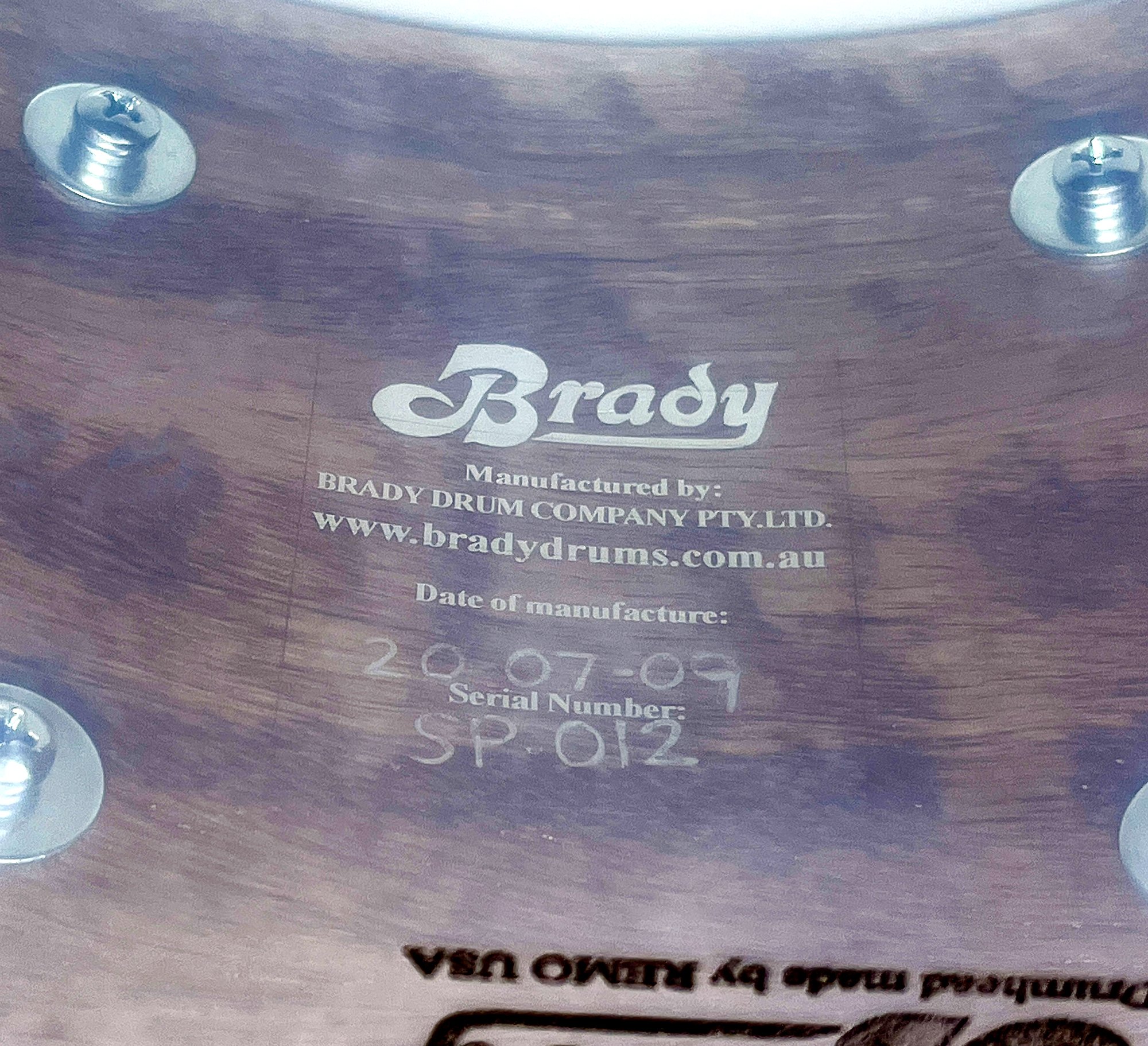Brady Drums, made by Chris Brady and company, are revered worldwide for their fine craftsmanship, exotic Australian timbers, and most notably their wonderful and unique sound. Chris Brady, truly a drum building pioneer, introduced Jarrah, Sheoak, Wandoo, Spotted Gum, and other indigenous Australian woods into the vocabulary of drummers. Brady constructed these drums with ply, stave/block, and even solid shells.
While Brady Drums began around 1980, they exploded onto the music scene around 1991. The Spin Doctors had released an album, “Pocket Full of Kryptonite”, with an amazing drum intro and beat by drummer, Aaron Comess. Just about every drummer was asking, “what was that snare drum?”. The drum sounded incredible, and certainly Aaron brought out the best in it. The snare drum was later revealed to be a 4.5 X 14” Brady jarrah ply shell snare, a drum which Aaron still has in his arsenal to this day. Brady drums had certainly been popular with A-list drummers like Jeff Porcaro, Jim Keltner, Larry Mullen, Dony Wynn, and others. However, these drums were largely used in the studio, so Brady had not yet perhaps received the public attention it deserved. After Aaron Comess shared the identity of his beloved snare drum, Brady became a household name and highly regarded as one of the premier drum companies.
On November 25, 2015, Brady Drums formally announced they were ceasing operations due to ongoing serious health issues with their founder and master craftsman, Chris Brady. This was a sad day for the drum community, knowing that no new Brady drums would be forthcoming. However, all wished Chris the best of health and hoped he would recover. Subsequently, the desire and value of Brady drums steadily increased as they were now limited in number.
One of the rarer Brady drums was the circa 2009 Spotted Gum ply snare with a wooden “drummer man” badge. I saw one of these drums in an estate sale and was intrigued by the wooden badge. I had never seen this Brady badge before. When I purchased the drum, I admittedly did not know its rarity. According to Darren Versaico (Brady Drums craftsman), Brady only made approximately 45 of these drums. The shells were 10-ply Australian Spotted Gum and did not have reinforcing rings.
I was fortunate to speak with Chris Brady and asked him to share his philosophy on building ply drums the “Brady way”:
Chris Brady: “When we made ply drums, they had very little tension in them. We used 0.6 mil veneers, so very thin, and we put them in the mold one-by-one. When you bend them, they’re not under much stress because they’re reasonably pliable. Tension raises the pitch. Our drums are lower in pitch (than other drum manufacturers) because there’s much less tension in them. If you put reinforcing rings in an ordinary ply or steam-bent drum, then you lift the pitch more. You could make a thinner shell, but the reinforcing rings would still raise the pitch. That is the secret to all our drums – less tension, no reinforcing rings, and really, really hard wood - so you get a lower pitch with a hard wood shell which really amplifies the sound.”
I inquired further about the wooden badge. According to Kelly Brady Amoroso and Darren Versaico, this badge was meticulously hand-made from 31 different woods, a craft known as micro-marquetry, i.e., applying extremely small strips of colored wood to form the figure of the drummer man and Brady logo. It took incredible skill, artisanship, and significant time to craft these Brady drummer man badges out of small slivers of wood. This is one of the reasons so few of these drums were made – creation of the badges alone were a herculean effort.
The snare drum I acquired was in fabulous condition; a 6.5 X 14” with a beautiful golden brown colored spotted gum shell, Brady tube lugs (10), triple flange hoops, single vent, and Dunnett throw-off. It was internally labelled:
Date of manufacture: July 20, 2009 (20-07-09)
Serial Number: SP-012 (i.e., spotted gum ply, #12)
The sound could be described as sensitive, deep and throaty at low tensions, progressing to an articulate, almost indescribable bark or attack at higher pitches. It was my impression that this snare drum would cut through any mix yet never be harsh or overly abundant in upper frequencies at high tensions. Darren Versaico shared his experiences with Brady spotted gum snares: “Those snare drums, whilst sitting in the driver’s seat while tuned high, from out front they sounded quite ‘throaty' or much fuller than from behind the kit. That was their secret weapon per se. The low tension from the thin ply shell created an incredible low end. They sounded so full at any tuning while remaining crystal clear." Overall, a remarkable drum in sound and appearance that can be best described as a visual and sonic work of art.
My goal in collecting drums has always been to experience each one, immersing myself in its sound and construction, documenting the history/story, and then, when the time is right, pass the drum along to someone else to enjoy. I’ve had 5 years with this wonderful drum and am now proudly passing it on, along with its history, to the next caretaker (heading to a drummer in the U.K.). I know from our discussions he will enjoy playing it, knowing its proud heritage and having great appreciation for its artistry. It is my hope that when the time comes for the drum to move on again, this story will go with it.

